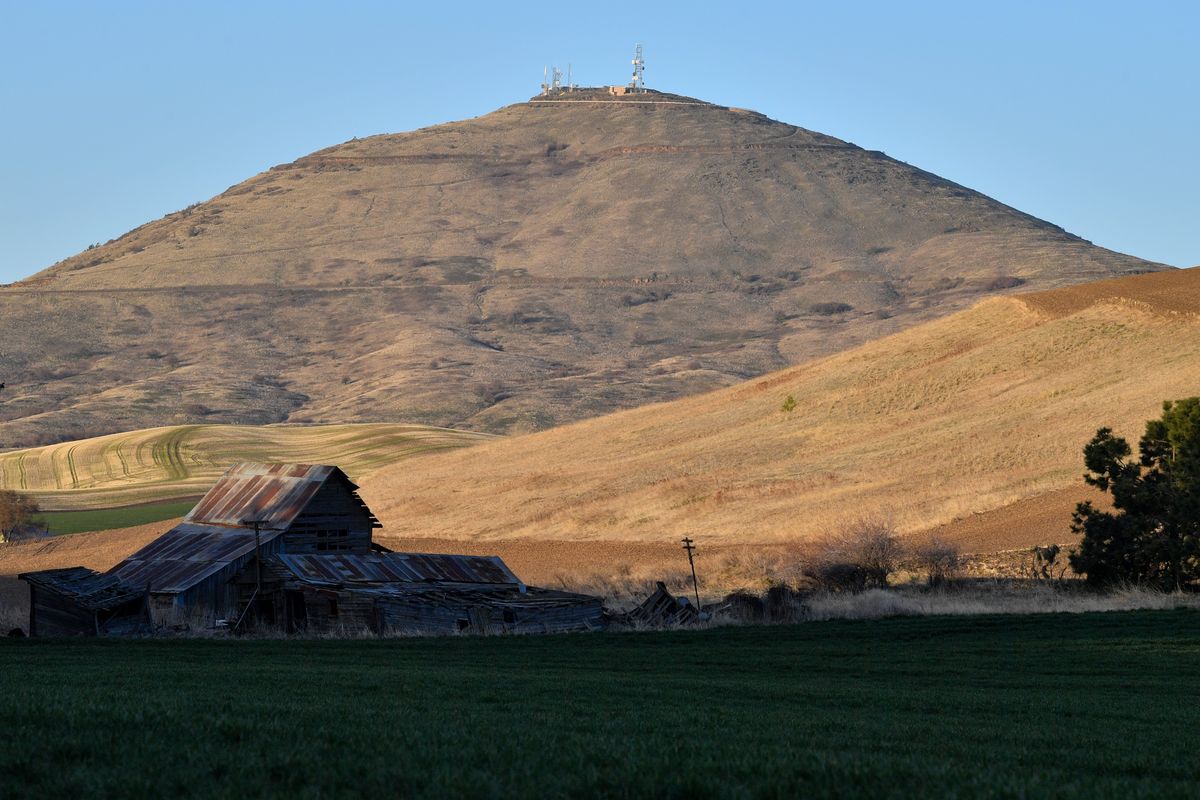Washington buys more Steptoe Butte land to preserve it

The largest remaining swath of native Palouse prairie will be preserved thanks to a transaction that moved hundreds of acres of Steptoe Butte into public ownership.
Kent Bassett, of Bellevue, and Ray and Joan Folwell, of Pullman, sold a 437-acre parcel on the flanks of the butte to the Washington Department of Natural Resources. The transaction has been in the works for more than two years and closed Wednesday.
Bassett and his late wife, Elaine, teamed up with the Folwells to purchase the property in 2016 with the idea of protecting the area rich in native plants from development.
“Our goal in purchasing this and bringing ownership to the state was simply to preserve it as it is, to make it look no different than it was except for perhaps better control of invasive species,” Bassett said. “We are trusting the state will maintain it in perpetuity.”
The top of the butte is a Washington State Park but much of land flanking it was in private ownership.
The newly public parcel wraps around three sides of the conical-shaped butte, giving it three distinct ecosystems – canyon grasslands, Palouse prairie and forest land.
Before Europeans settled and converted it to agriculture, the Palouse region was a vast sea of grass and native vegetation with small pockets of forest. Pullman botanist Richard Old said more than 99% of that original prairie is gone, making the parcel on Steptoe Butte priceless to ecologists and botanists.
“It’s the largest Palouse remnant that is left, and it’s in the best condition,” he said.
Two years ago, the Washington Recreation and Conservation Office awarded a $1.2 million grant to the Department of Natural Resources to facilitate the purchase. The transaction was slowed by the COVID-19 pandemic and the insistence of the sellers that the state demonstrate a financial commitment to fighting invasive weeds.
The property includes a small area where cellular towers are sited. Bassett said the deal included a provision that the income from a lease associated with the towers will be used to fund weed control efforts.
The department has previously indicated it will manage the parcel as a natural area preserve, a natural resources conservation area or some combination of both. The first is more restrictive, with a focus on research and education.
Access is allowed, but activities like hunting are rare.
The second would allow more access and be less restrictive, but still have a priority of conserving ecological values.